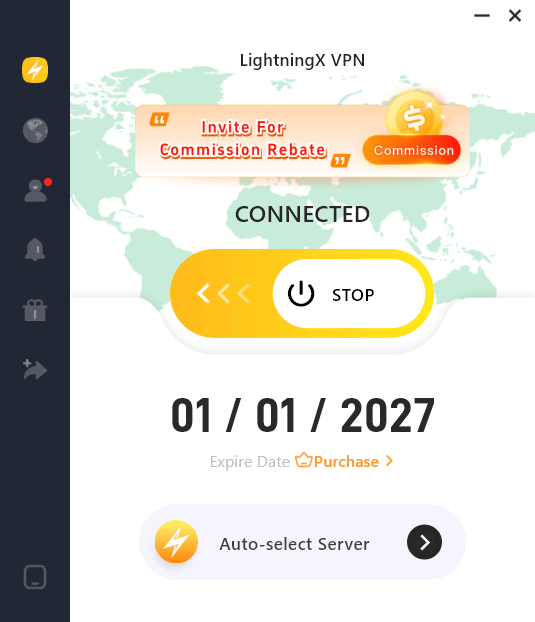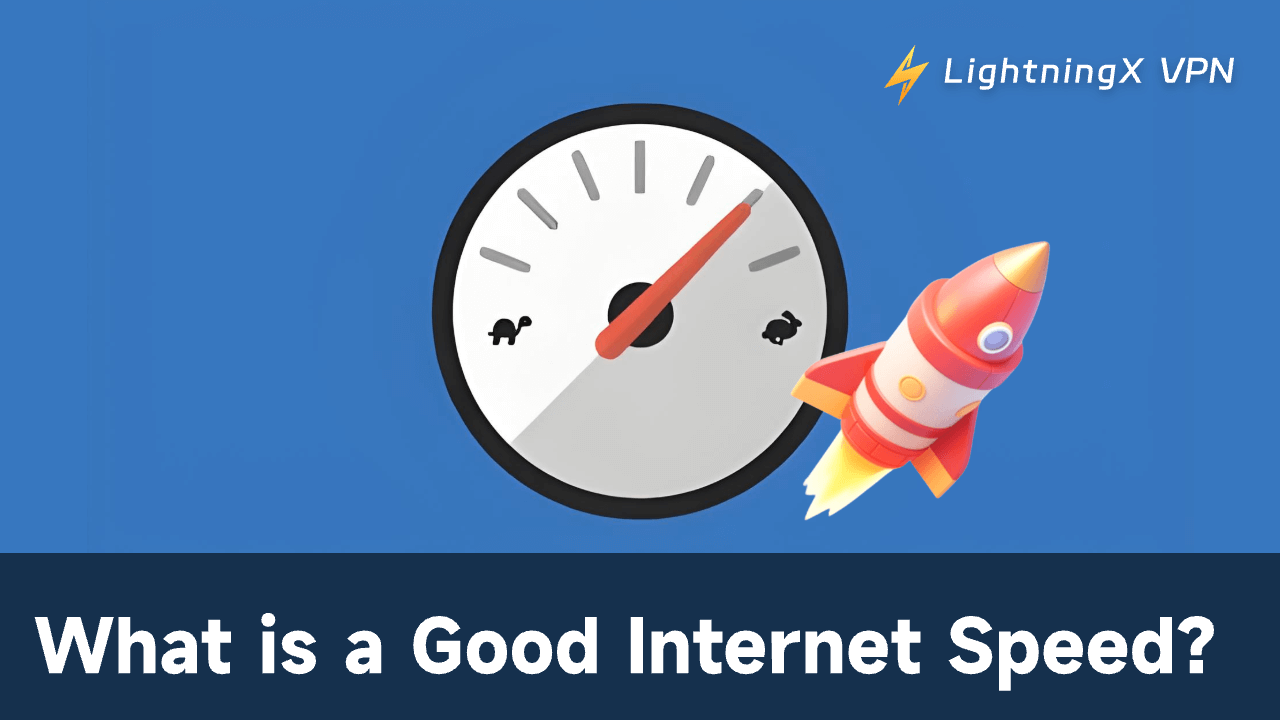Is your internet really fast enough for everything you do online? Between streaming movies, joining video calls, gaming, and managing smart home devices, slow or unstable connections can quickly become frustrating. The truth is that “good” internet speed isn’t the same for everyone. In this article, we’ll break down what a good internet speed is, how to test and improve your connection.
What Is a Good Internet Speed?
When talking about internet speed, the first thing to consider is what you’re using it for. Do you want smooth movie streaming, Zoom calls without freezing video, or a lag-free gaming experience? Once you know that, it’s easier to decide what kind of speed matters most – download or upload.
For most households, an internet plan of around 100 Mbps or higher is generally considered a solid baseline. It might be the best internet for streaming, online meetings, and gaming all at once without noticeable lag or buffering.
What’s the Average Home Internet Speed?
The average home internet speed varies widely depending on where you live and what kind of connection you use.
In the United States, for example, most households today get download speeds between 150 Mbps and 300 Mbps, according to recent reports from major ISPs.
In urban areas with fiber-optic coverage, speeds can easily reach 1 Gbps or more, while rural areas still often rely on DSL or satellite, which might only deliver 20 to 50 Mbps.
It’s also worth noting that the average doesn’t always reflect experience. Your real-world speed depends on several factors – such as how many devices are connected, the type of router you use, and even the time of day when the network is busier.
That’s why a 200 Mbps plan may feel lightning-fast for one person but sluggish for another who’s streaming 4K movies on multiple devices.
If you’re unsure whether your connection meets your daily needs, it’s a good idea to run a speed test and compare the results to your provider’s advertised rates.
How to Improve Your Internet Speed
When your internet feels slow or inconsistent, there are several ways to give it a noticeable boost.
Start by checking the basics. Restart your router and modem. Next, make sure your router is positioned in an open area, away from walls or other electronics that might block signals. The closer your devices are to the router, the stronger the connection will be.
If you’re still not getting the speeds you expect, look into your network congestion. Too many connected devices (especially smart TVs, phones, and IoT gadgets) can eat up bandwidth. Try disconnecting unused devices or limiting background updates during peak hours.
Another important step is to check for outdated hardware. Routers older than five years might not support newer Wi-Fi standards like Wi-Fi 6 or 6E, which can handle higher data throughput and more devices simultaneously. Upgrading your router or using a mesh Wi-Fi system can dramatically improve coverage and stability.
The FCC has reinterpreted broadband, or high-speed internet, as a service that offers a minimum upload speed of 20 Mbps and a minimum download speed of 100 Mbps. 25 Mbps download and 3 Mbps upload speeds were the previous specifications. That might be adequate for the majority of users, but more speed is required if you want the greatest internet experience.
The following are some pointers to speed up the internet:
- Upgrade the internet package you currently have.
- Connect and utilize an Ethernet cable.
- Connect and Utilize a VPN
- Think about replacing your old hardware.
Related: Is Ethernet Faster than WiFi? A Comprehensive Guide
If your internet connections are sluggish, should you change plans?
If your internet speed is sluggish, you shouldn’t change plans. However, if you haven’t been able to increase your speeds in any other way, you ought to think about changing plans. Here’s what to do if your internet is running slowly.
Check to see if the poor speeds you’re experiencing are comparable to the speeds you pay for each month with your internet service. If so, if your speeds are too slow, you might want to consider upgrading to a better plan.
However, do your research. The majority of Americans have access to two or more local internet providers, and you might be able to get a faster speed from one of them than you currently have.
Remember that you may get better at speeding up a slow connection without getting a more expensive plan. Reducing bandwidth usage is another way to optimize the connections that are most crucial to you.
Sometimes, your Internet Service Provider (ISP) throttles your bandwidth based on traffic or activity type.

In that case, using a VPN like LightningX VPN can help bypass these slowdowns by encrypting your data and hiding your traffic from ISP monitoring. LightningX VPN offers no bandwidth limits, minimal speed loss, and optimized routing, so you can stream, play, or work online without frustrating delays.
And many people thought that a VPN slows down the internet speed. In reality, a well-optimized VPN like LightningX VPN can have minimal impact on speed. Sometimes it even improves your connection by finding faster, less congested routes to servers.
Tip:
LightningX VPN is an ultra-fast, stable, and secure VPN tool that offers 2000+ servers in 70+ countries. Use this tool to change your IP address, bypass geo-restrictions to unlock global information, and protect your online privacy.
How Much Internet Speed Do You Really Need?
This depends on what you use it for and how many people are sharing the connection. For browsing websites or checking emails, you can get by with as little as 5 Mbps. But streaming HD movies on Netflix or YouTube usually takes around 10 Mbps, while 4K streaming needs closer to 25 Mbps for a smooth experience.
Gamers need more than just speed; however, low latency matters most. But still, 20 Mbps or higher per device is a good target. If you work from home, especially uploading large files or joining long Zoom meetings, aim for 50 Mbps or more to avoid lag or sudden drops in quality.
And if you have a few people in the same household all streaming, gaming, or video calling at once, a 100 Mbps connection (or higher) is where things start to feel effortless.
It’s also worth remembering that what you see on paper doesn’t always match real-world performance. Even with a fast plan, your connection can still slow down during peak hours or when your ISP throttles bandwidth.
In those cases, tools like LightningX VPN can help smooth out the traffic flow by stabilizing your connection routes and minimizing artificial slowdowns. The result is a more consistent online experience – not necessarily “faster,” but definitely steadier.
What Are the Best ISPs?
The best ISP really depends on your location, but a few names stand out for their speed, reliability, and customer satisfaction. Here’s a quick look at some of the top options around the U.S.:
- AT&T Fiber: Excellent fiber coverage with strong upload speeds and solid customer service.
- Verizon Fios: Known for ultra-stable fiber connections and symmetrical speeds.
- Google Fiber: Simple pricing, no contracts, and blazing-fast gigabit plans where available.
- Xfinity (Comcast): Widely available and generally fast, though speeds can fluctuate during peak times.
- Spectrum: A good balance between speed and coverage, especially in suburban areas.
- T-Mobile Home Internet: Uses 5G networks for flexible home connectivity, great for renters or smaller households.
- Starlink: Satellite-based, ideal for rural or remote areas where traditional broadband isn’t available.
How to Test Your Internet Speed
Testing your internet speed is quick and easy. Use free tools like Speedtest.net, Fast.com, or Google’s built-in speed test to check your download speed, upload speed, and latency.
Run the test at different times of the day to see if your connection fluctuates. If speeds are lower than expected, it could be due to network congestion, router placement, or ISP throttling.
The average home internet speed varies widely depending on where you live and what kind of connection you use.
In the United States, for example, most households today get download speeds between 150 Mbps and 300 Mbps, according to recent reports from major ISPs.
In urban areas with fiber-optic coverage, speeds can easily reach 1 Gbps or more, while rural areas still often rely on DSL or satellite, which might only deliver 20 to 50 Mbps.
It’s also worth noting that the average doesn’t always reflect experience. Your real-world speed depends on several factors – such as how many devices are connected, the type of router you use, and even the time of day when the network is busier.
That’s why a 200 Mbps plan may feel lightning-fast for one person but sluggish for another who’s streaming 4K movies on multiple devices.
If you’re unsure whether your connection meets your daily needs, it’s a good idea to run a speed test and compare the results to your provider’s advertised rates.
When Do Speeds on the Internet Decline?
Many things can contribute to slow internet connections, such as the following:
- Where are you?
- When you are accessing
- The number of occupants in your house
- The gadgets and software you utilize
All of these things can cause network congestion, which is the equivalent of having more people than your network can support using the internet at rush hour on a highway.
The previous few years have seen an increase in the problem of congestion. Home internet connections have increased dramatically as many organizations have shifted to remote work. Even while businesses are making an effort to reduce poor internet speeds, increased consumption does cause network congestion.
This is also the rationale behind data caps implemented by some internet service providers, which aim to keep user bandwidth usage within reasonable bounds. Many ISPs offer “soft” data caps, which means that you won’t actually experience a slowdown in performance until the cap is reached. Some have “hard” data caps, and if you go over them, you’ll due money. Try to get a package with unlimited high-speed data if you need to use the internet a lot every day.


















